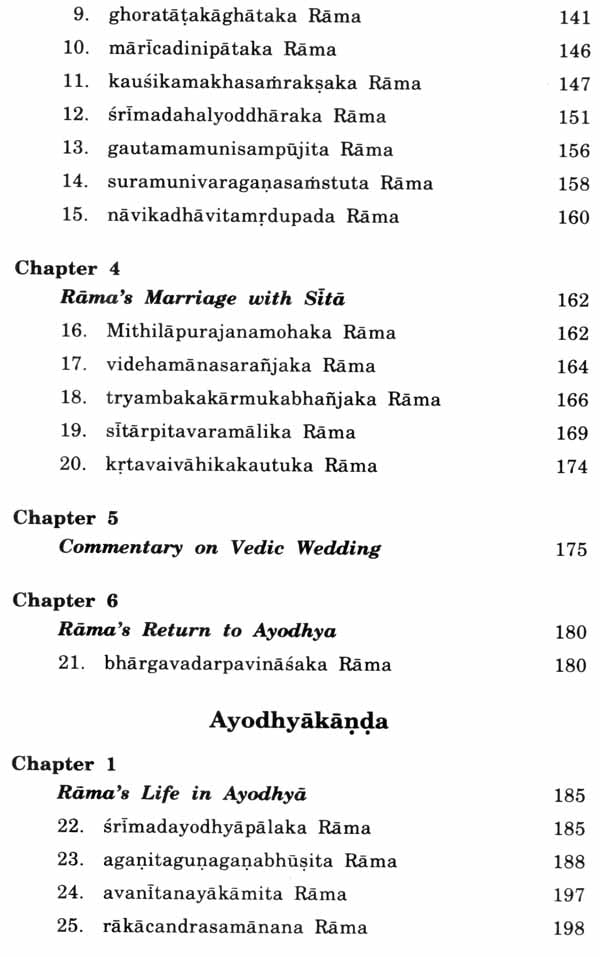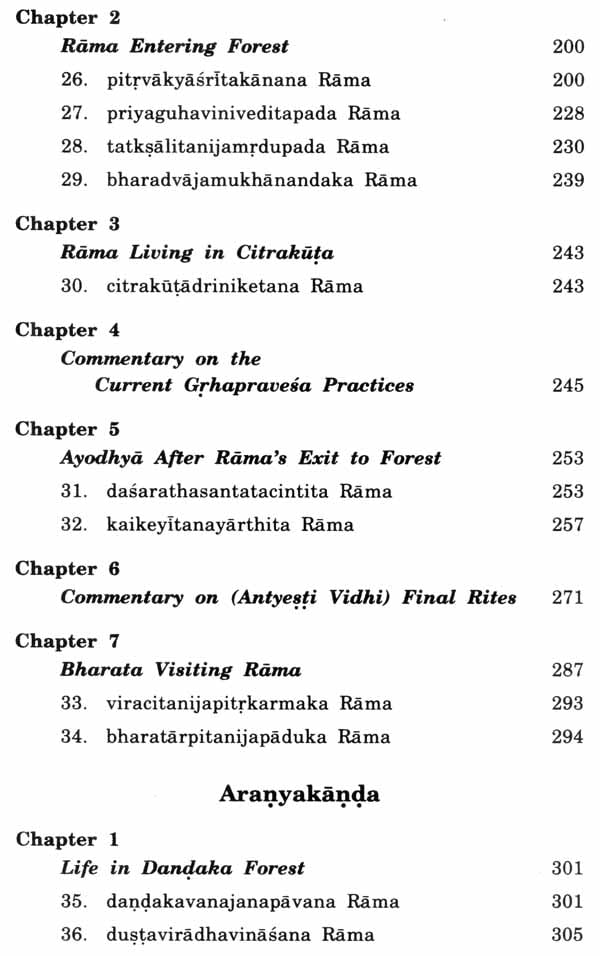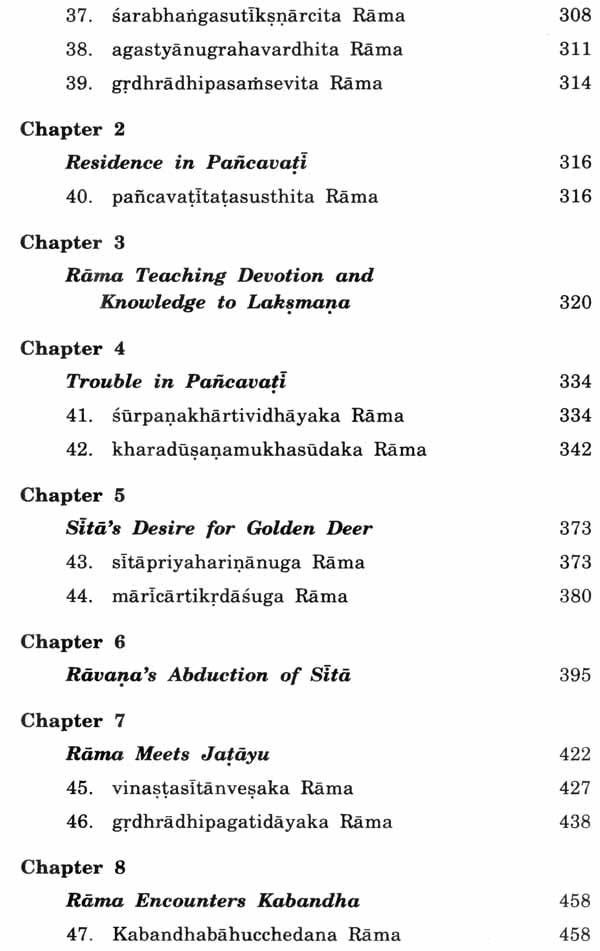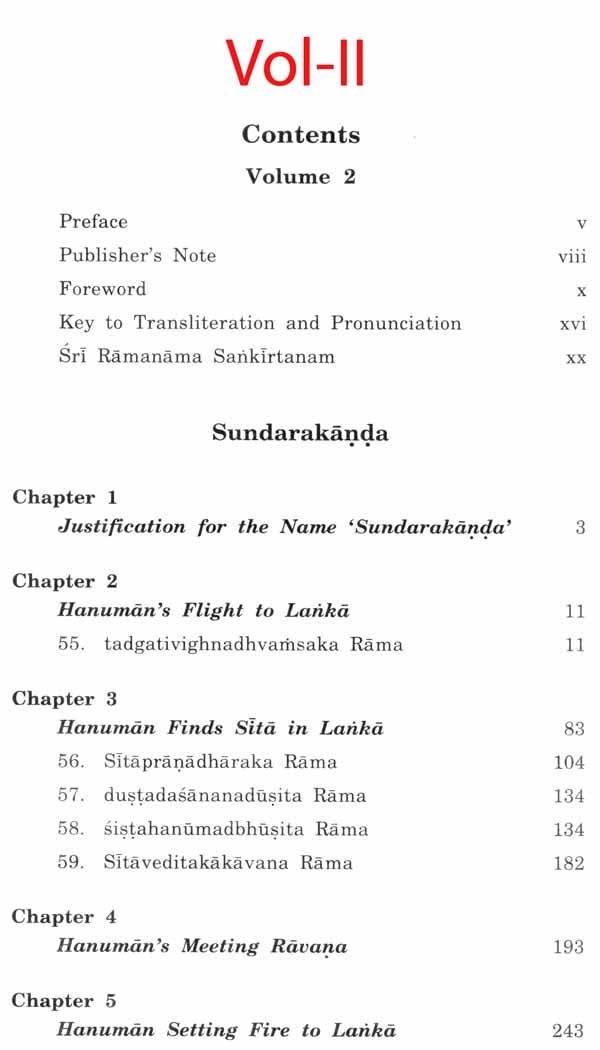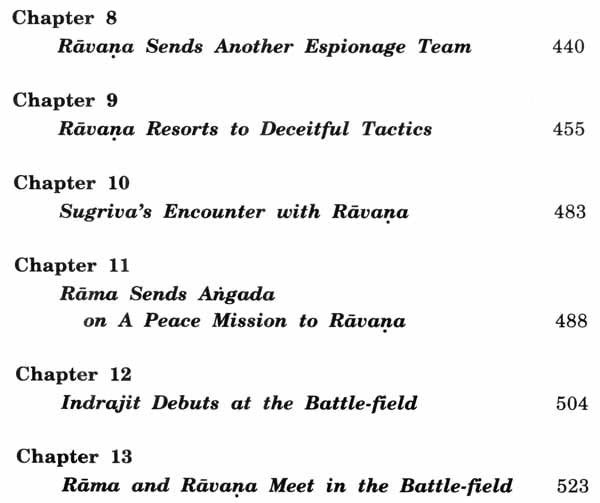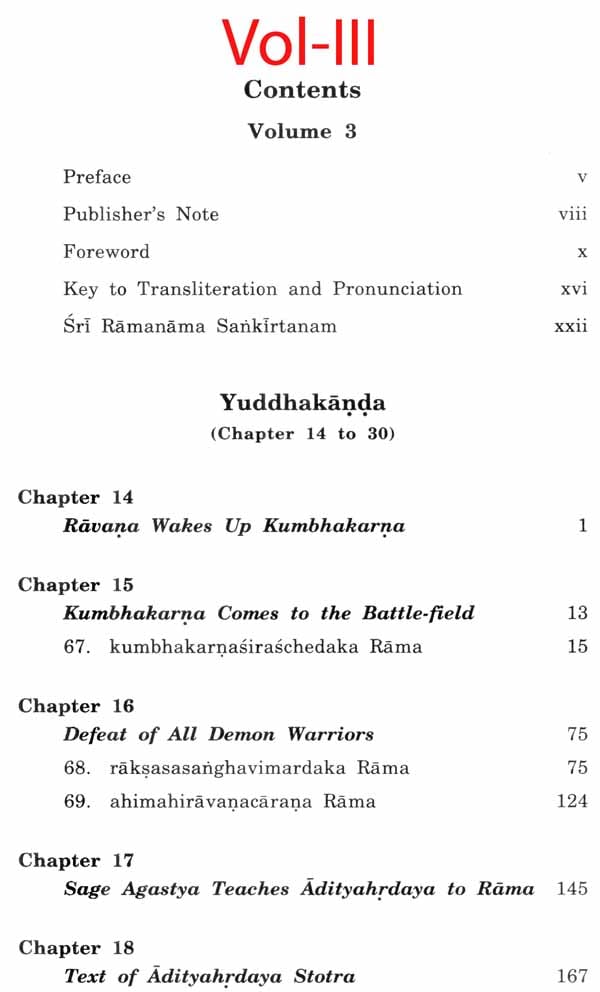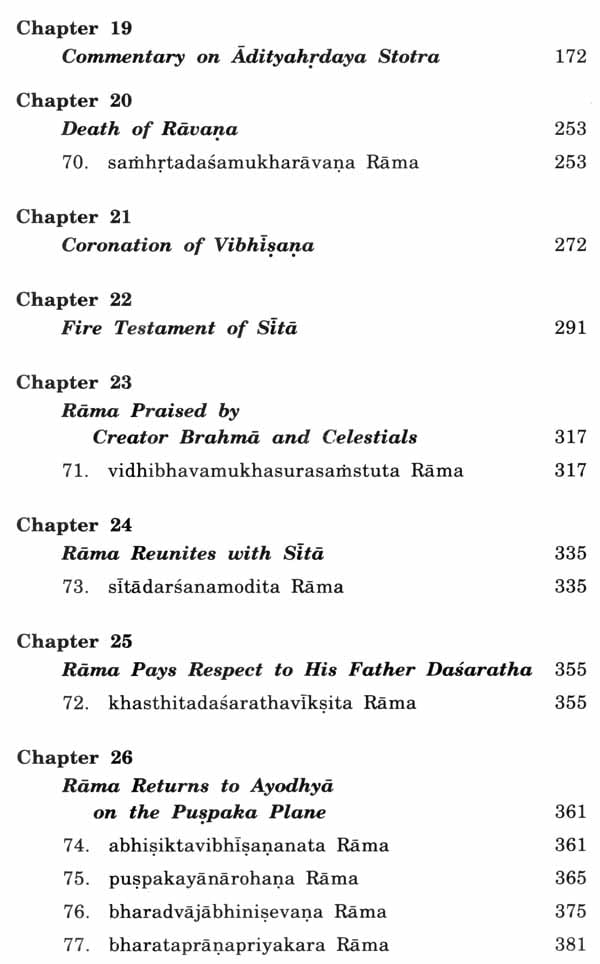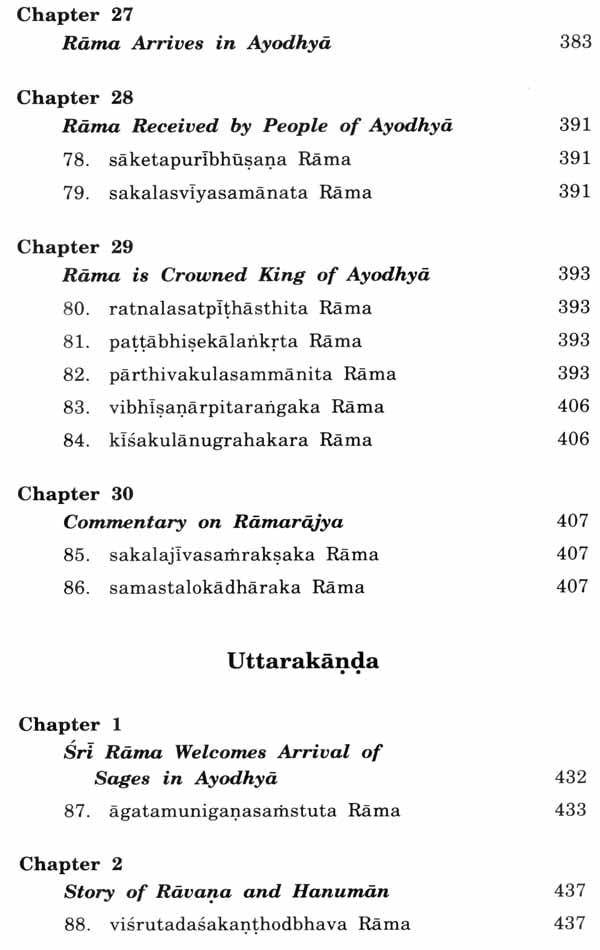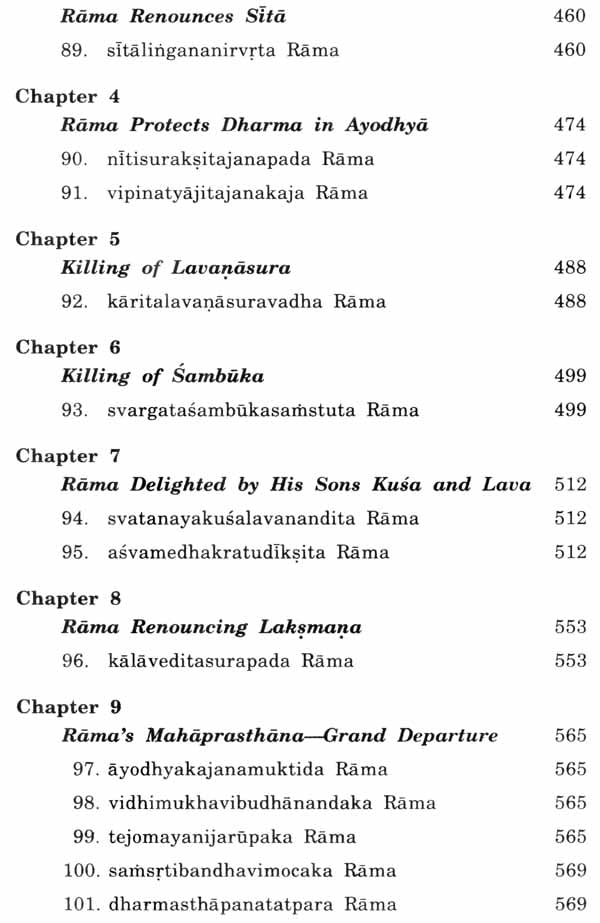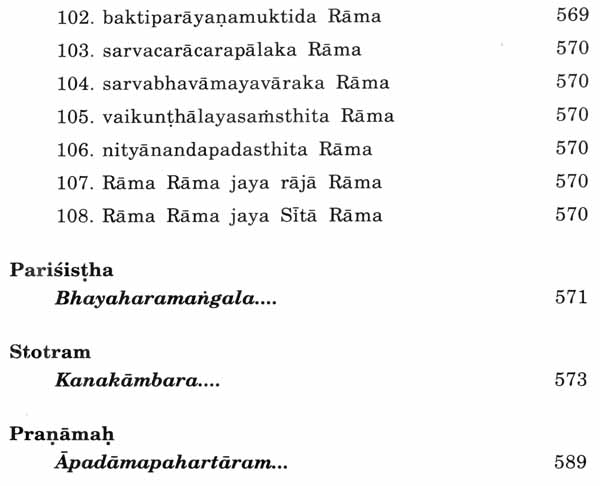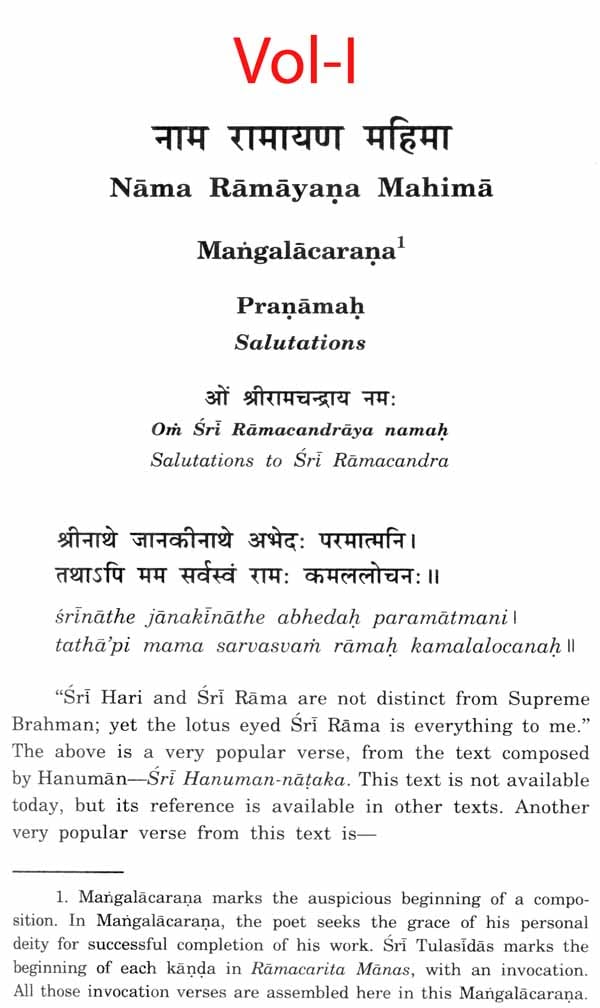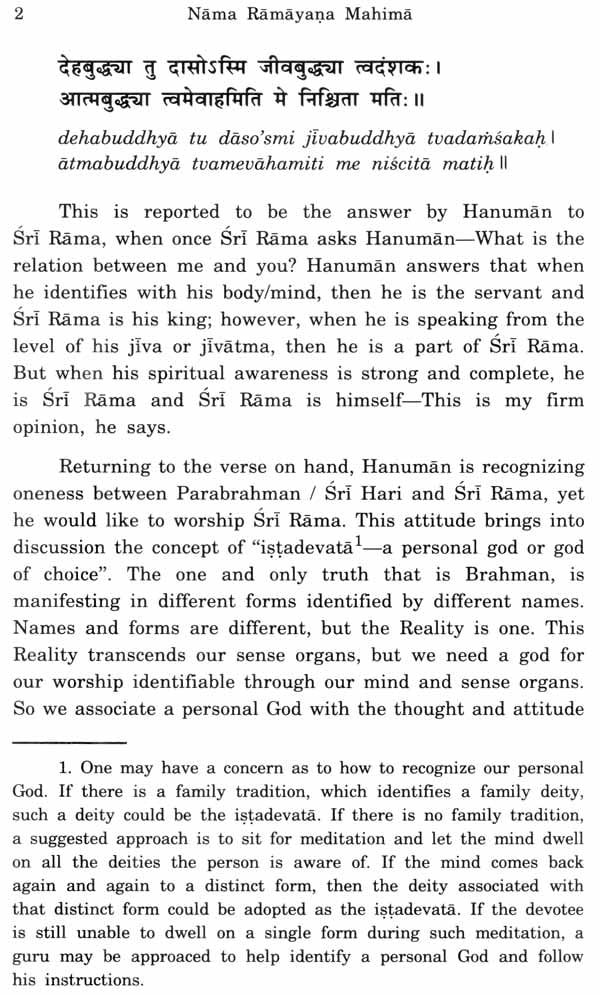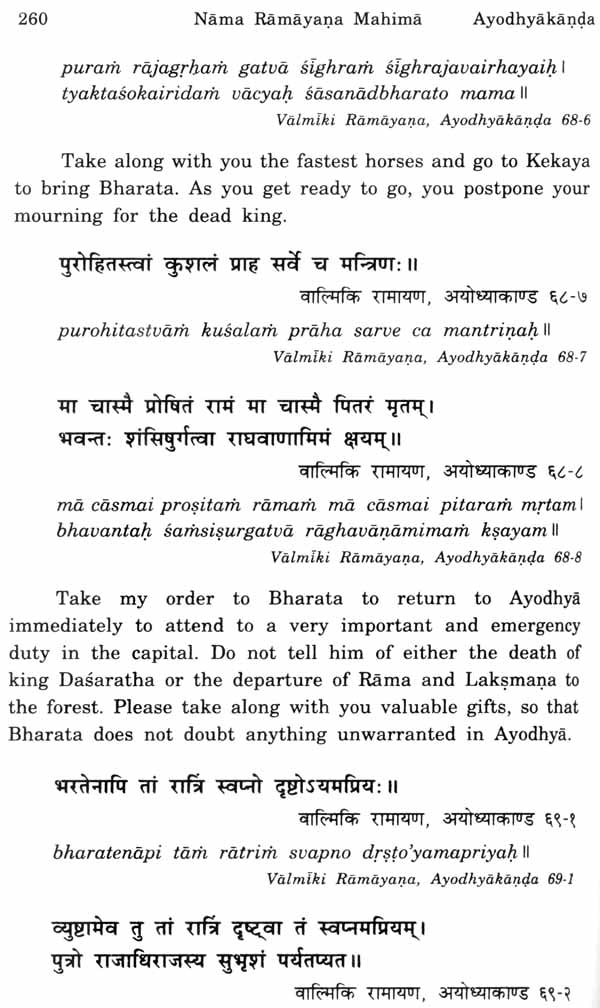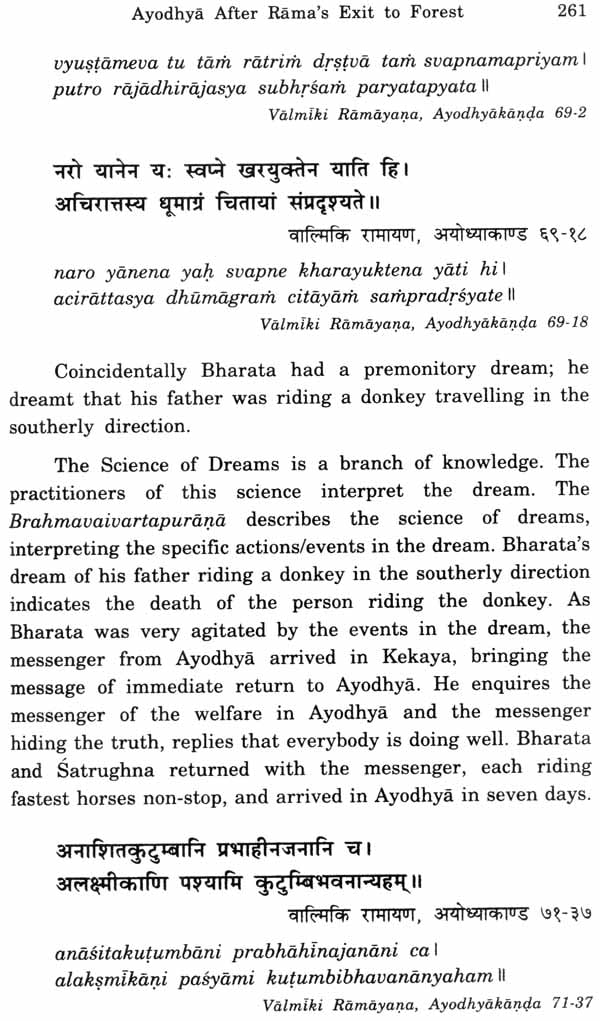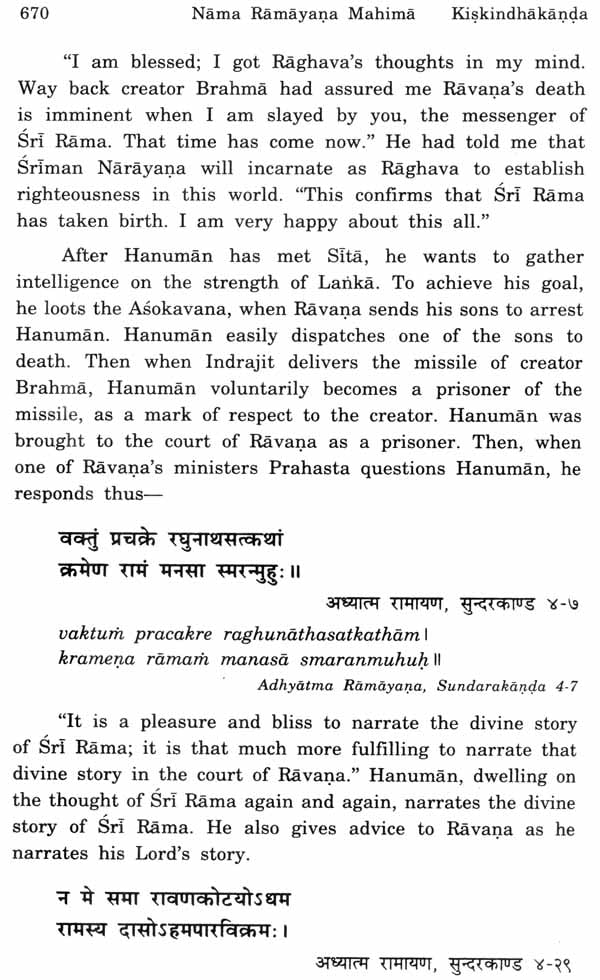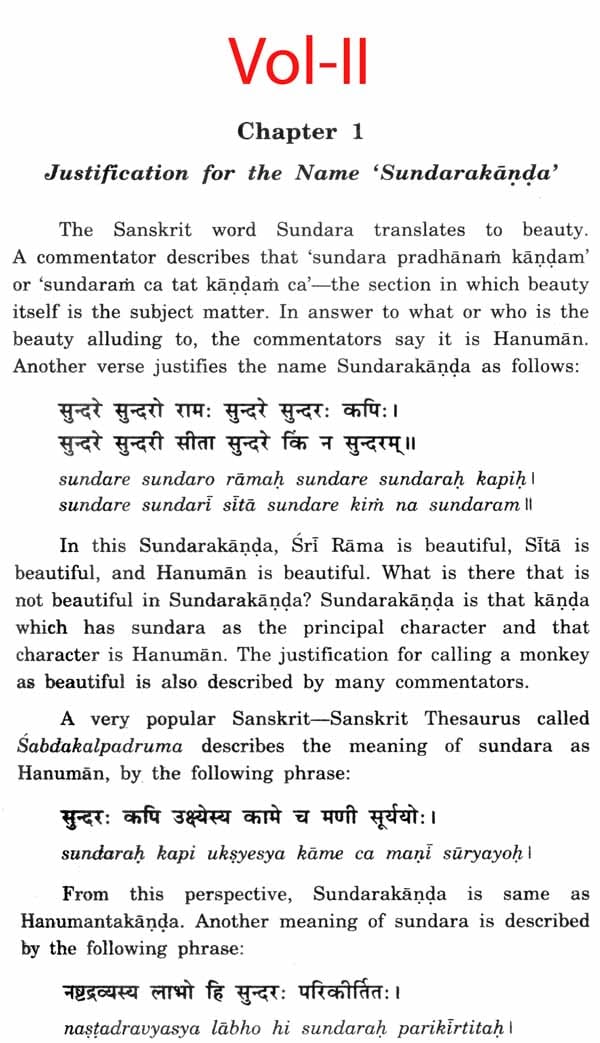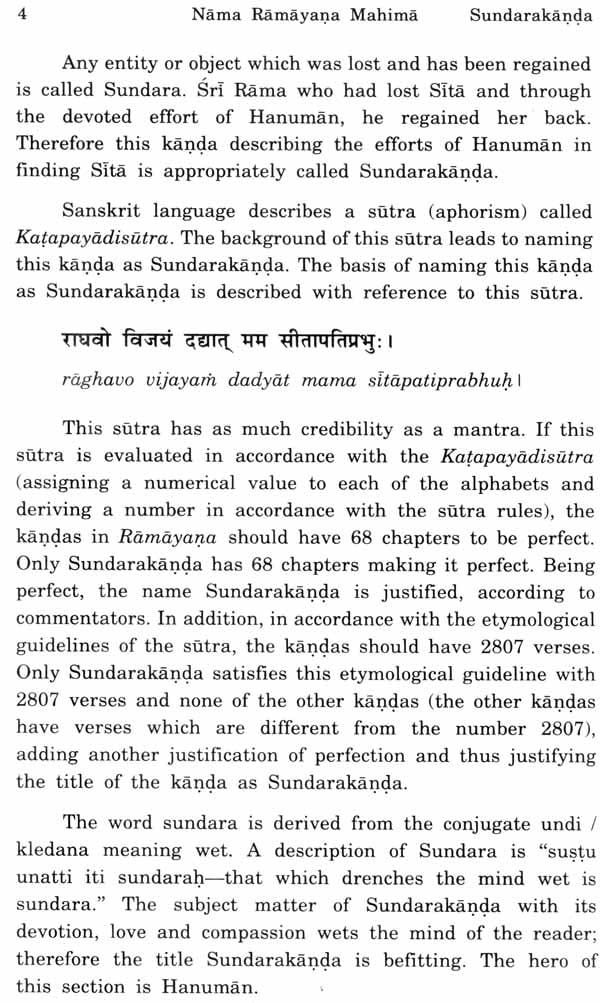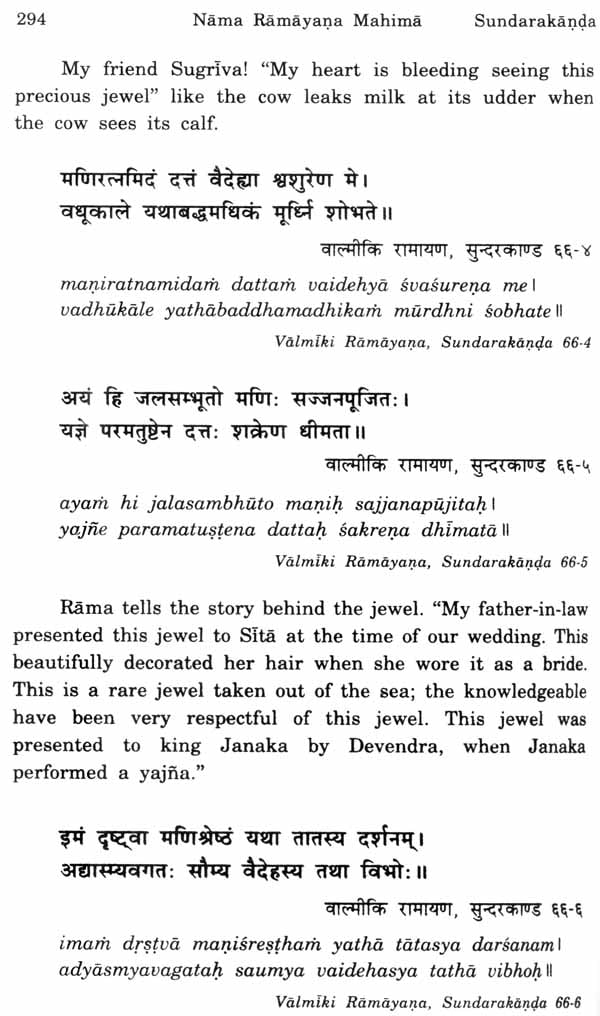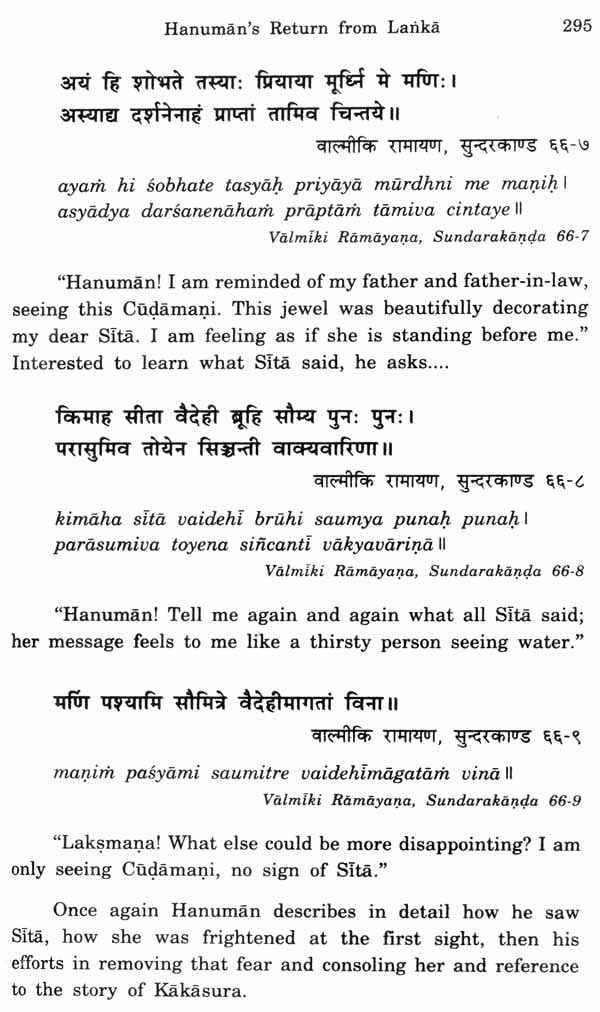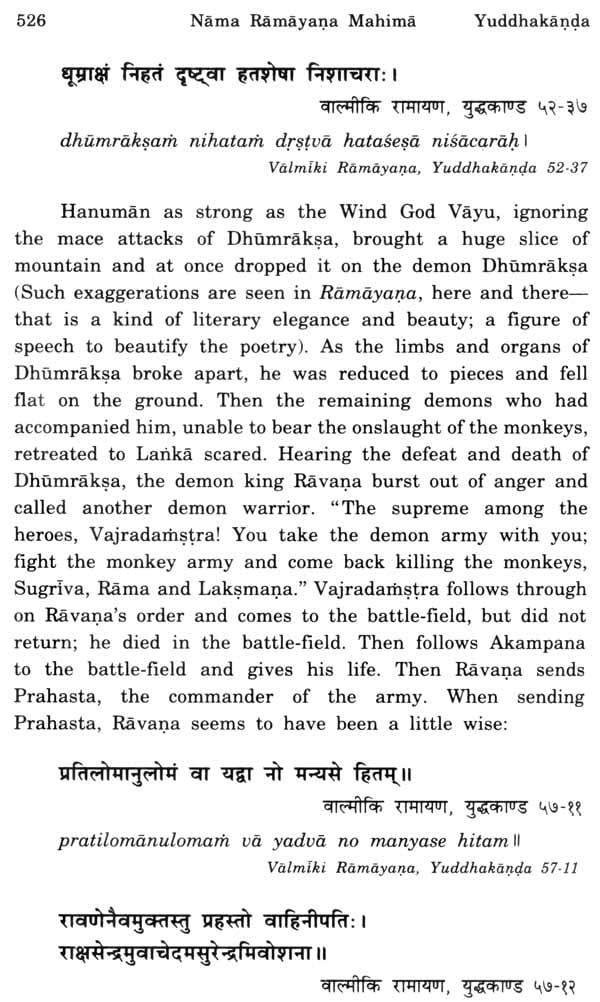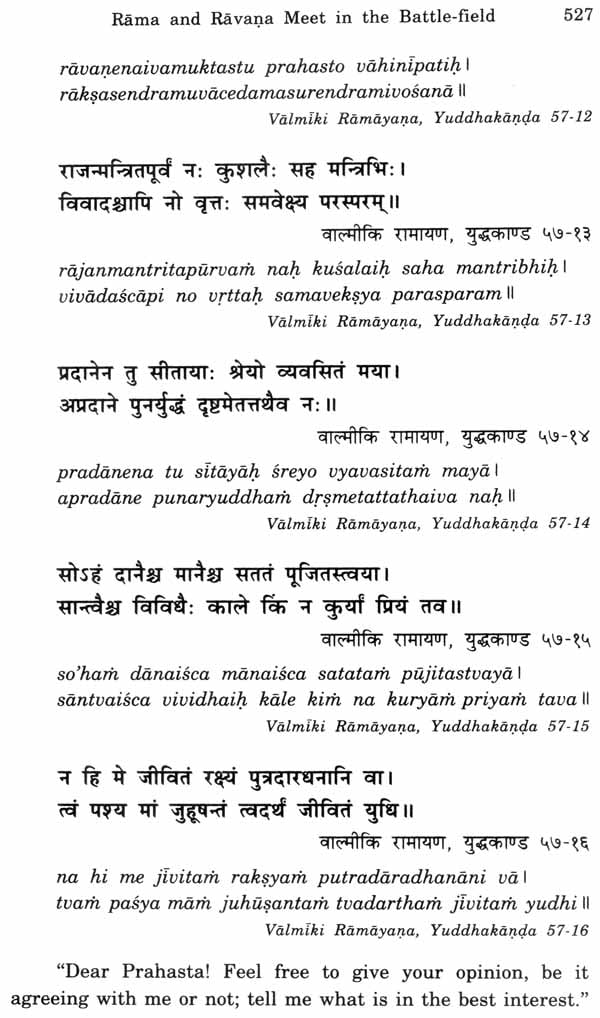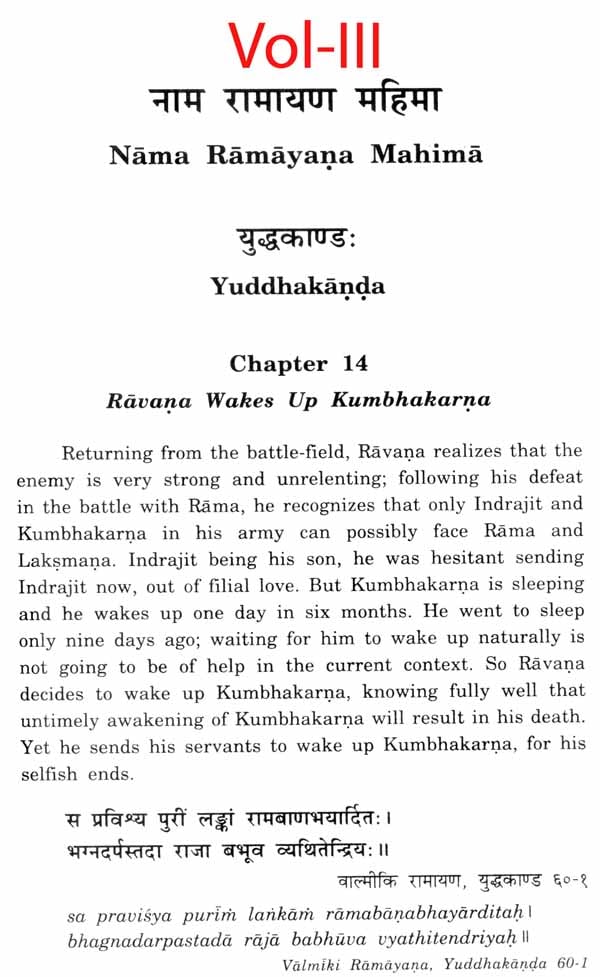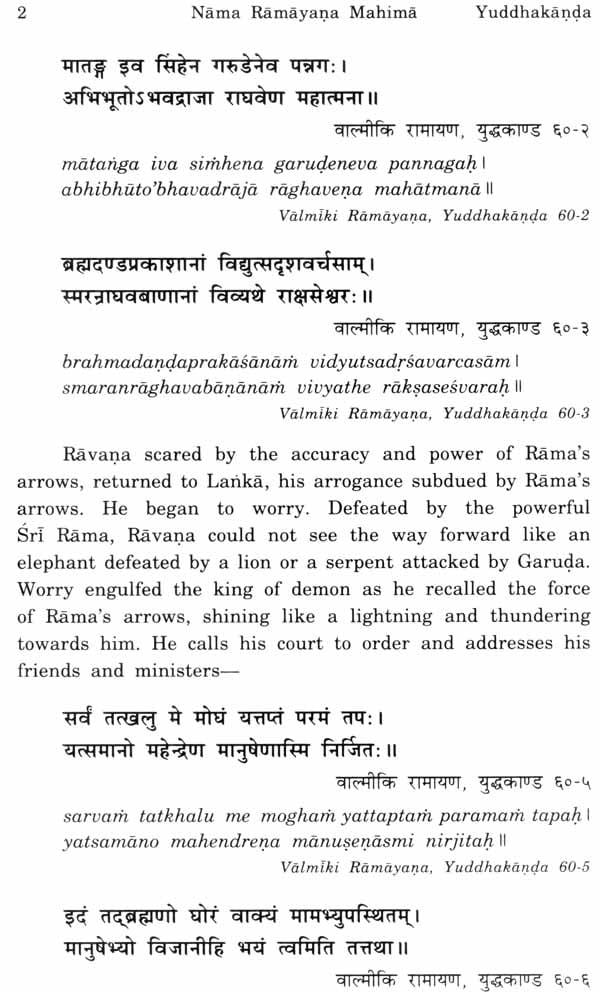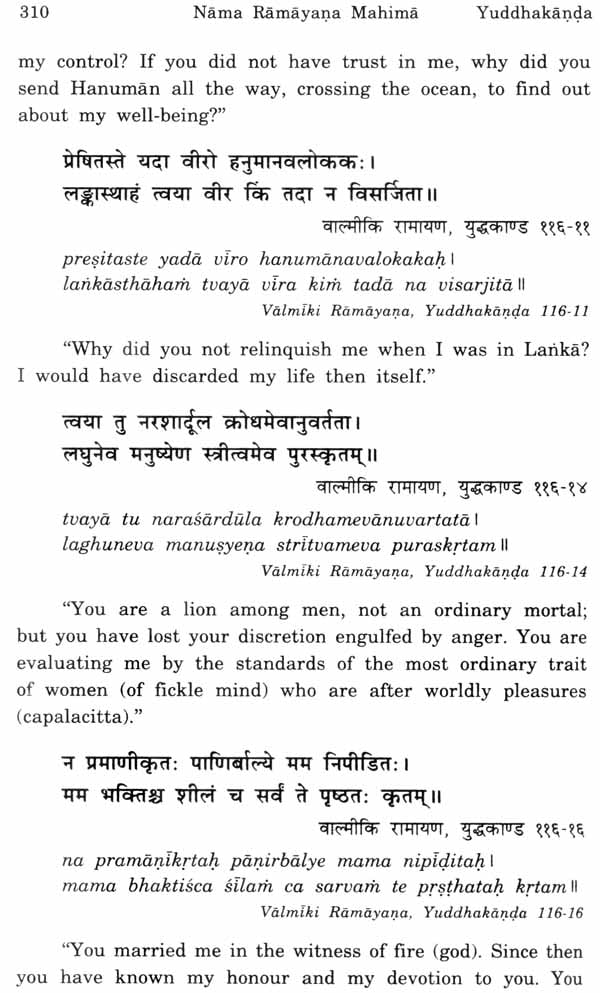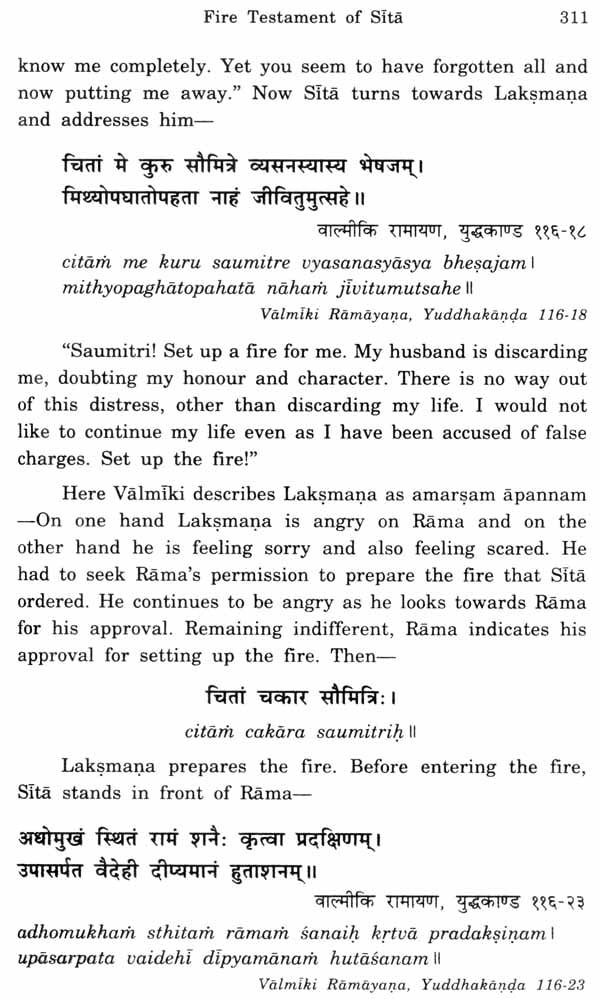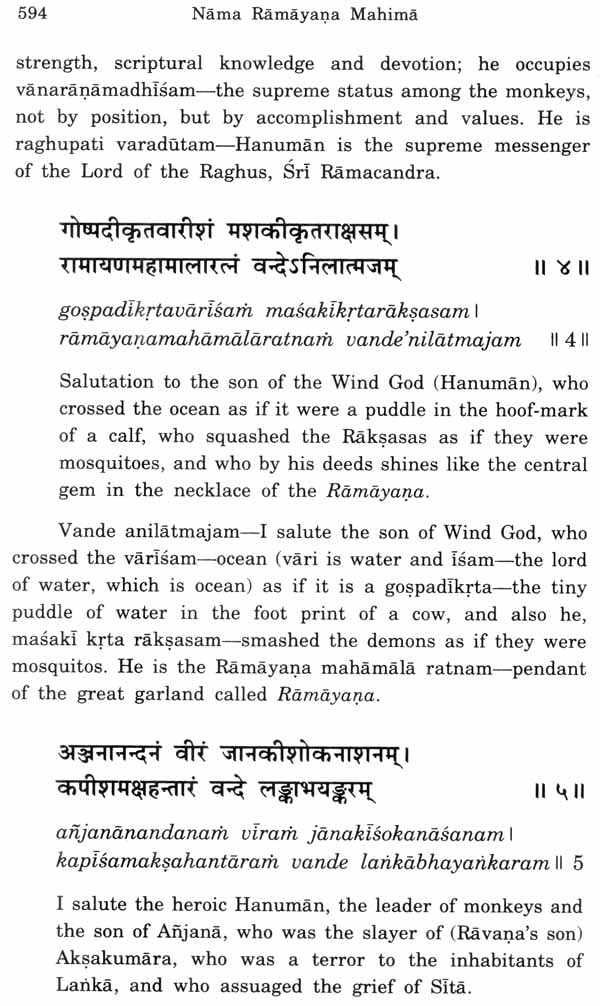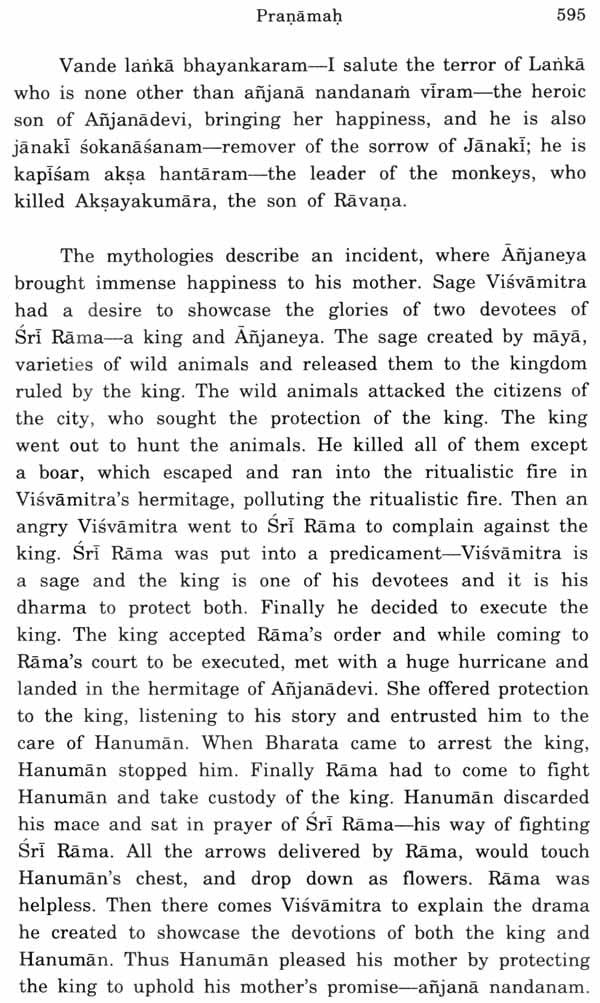
Greatness of Ramanama - Nama Ramayana Mahima : Commentary in English on the Ramanama Sankirtanam (Set of 3 Volumes)
Book Specification
| Item Code: | NAY384 |
| Author: | Swami Harshananda |
| Publisher: | ADVAITA ASHRAM KOLKATA |
| Language: | Sanskrit and English |
| Edition: | 2020 |
| ISBN: | Vol-I: 9788175054998 Vol-II: 9788175055001 Vol-III: 9788175055018 |
| Pages: | 1944 |
| Cover: | HARDCOVER |
| Other Details | 9.00 X 6.00 inch |
| Weight | 2.56 kg |
Book Description
Between the two, however, it is the Ramayana that is ruling the hearts of the Hindus with its innumerable and elegant offshoots. One such which is extremely widespread and popular even today is the "Ramayana Sankirtanam" often set to music and sung. This poetical composition of just 108 lines has admirably condensed in itself, the entire story of the Ramayana of 24,000 verses. That is perhaps the reason that it is often termed as "Nama Ramayana". In the centres of the Ramakrishna Order, as also their associated official or unofficial units, this Nama Ramayana is generally sung on the evades days along with some other hymns, the whole programme being christened as "Ramayana Sankirtanam" .
Though the lines of this Nama Ramayana are very short they contain-like the image of a huge elephant being contained or reflected in a small mirror-a lot of the original suitably condensed or intuited. It is but natural for a devoted listener to hanker for more. This is exactly what has been attempted here, by supplying a lot of the original material between every two lines. As a result, by the time you complete reading the whole book you have in a way covered the entire work of Valmiki and perhaps more.
This 'more' has been made possible primarily due to the addition of relevant portions culled from the Adytum Ramayana, the Ananda Ramayana and the Ramacarita Manas (of Sri Tulasldas). Appropriate selections from the Hindu Scriptures too have found a place here and there.
Apart from some (apparently) controversial incidents -like the killing of Vali-the huge work includes some special but well-known topics like grhapravesa (entering a newly built house), vivaha or marriage and sraddha or obsequies rites which though common are not known much. This has necessitated the expansion of the work to produce greater clarity. Consequently these topics too had to be integrated.
As a result what was intended to be a small work has now grown to huge proportions. However, the exhaustive treatment meted out has definitely and rightly resulted in a more useful treatise.
This book has a strange history which must be revealed now. The contents were originally delivered as 150 discourses of one hour each in the Kannada language, at the auditorium of the Ramakrishna Math of Bangalore (in the Karnataka State of South India). These discourses were duly recorded and then brought out as a compact disc, containing all of them in one unit.
Dr. Krishna Murthy Ramakrishna of Tampa, FL, USA, happened to listen to the same. He was so deeply impressed that he decided to bring it out in the book form in English. He first transcribed the contents of the whole disc in the original Kannada script and then took immense trouble to translate the same into eminently readable English. After suitably editing it he published it along with the necessary appendages. Apart from the Nama Ramayana part he published all the allied literature also which formed the original Ramayana Sankirtanam. disc.
This work he has done is, by any standards, simply superb. But for him, the present book would not have seen the light of the day. To say the least, we are extremely grateful to him.
There has been a debate on two aspects of the life of Sri Rama-the period of his life and his divinity. Regarding the period of Sri Rama, the tradition believes Sri Rama's incarnation dating back to some 800,000-900,000 years ago. But the modern thinkers or historians based on the zodiacal movements of planets recorded at the birth of Sri Rama and other events documented in Ynlmlhi Ramayana estimate the date of Sri Rama's time as 5000 Bee (about 7,000 years ago).
Sage Valmiki himself addresses the issues of divinity when he questions sage Narada-c-'Is there a person who has some dozen qualities (Valmiki Ramayana, Balakanda, 1-2, 5) and if so who is that person?' Narada replies that, though it is extremely difficult to find a person with one of those qualities, yet there is one supreme human, in whom alone you will find all the qualities you have listed-he is Rama, born in the dynasty of Iksvaku (Valmiki Ramayana, Balakanda, 1-8, 19). Here Narada refers to Rama as a supreme human being. Rama identifies himself as a human being- "atmanam manusam manye raman dasarathatmanjam-e-know me to be a human being, Rama, son of Dasaratha", Yet Rama displays many divine actions, like giving liberation to the bird Jatayu etc. But at times he also displays human emotions, making one wonder if he is a human or divine! 'As much as Rama is divine, he also had to display human emotions to lead the ordinary mortals as a role model for them to emulate in similar circumstances,' is the general consensus among many commentators.
In this context, the devotees of Ramayana quote a very popular verse:
The entity Parabrahma knowable through the Vedas is born as Dasaratha's son, Sri Rama. The Veda manifested in the epic language as Ramayana through Valmiki.
However, some pragmatists seem to suggest that the debate itself is mute. Either way-'Sri Rama is divine and took human birth to establish dharma or he was a human being, climbed up to the level of divinity by his steadfast adherence to dharma'. The values expounded in the Ramayana are virtuous values worthy of emulation by every human being, setting aside the value of the debate of his divinity.
Book's Contents and Sample Pages

